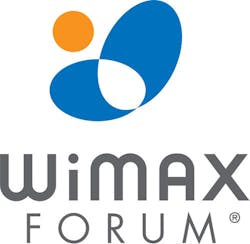Whatever Happened to These Once Hot Communications Technologies?
Change is inevitable. You’re only as good as your last successful product or technology. If you’re a follower of communications technologies, you know what I am talking about. As new and better devices and techniques are discovered and emerge, they leave the older standards to fade away. New competitive technologies quickly make the existing and older technologies obsolete. That’s how the modern electronics industry works these days.
Several once promising technologies come to mind when considering this phenomenon. These are the 2G and 3G cellular standards, WiMAX, and the power-line communications (PLC) technology HomePlug. All have faded into near oblivion as they’ve been superseded by newer and better technology. For whatever it’s worth, here’s a brief look at these technologies to bring closure to your curiosity.
2G/3G Cellular
The second-generation cellular was digital technology that replaced the first-generation analog FM systems. Several digital standards were developed based on a time-division multiple-access (TDMA) scheme (e.g., IS-136). Most of these enjoyed a short success, but quickly the European GSM (Global System for Mobile) communications technology gradually replaced them all.
It’s still around today, mainly in Europe and some developing countries. In the U.S., though, it’s mostly been phased out. AT&T turned off their GSM network in January of 2017. Verizon says it will keep GSM on until the end of 2019, and T-Mobile will maintain its GSM network until the end of 2020. Sprint plans to hang on until the end of 2021. The main reason for maintaining 2G is probably the companies’ responsibilities toward fulfilling the machine-to-machine (M2M) contracts.
Also on the way out are the 3G networks that were supposed to replace 2G. 3G cellular systems used spread-spectrum techniques like code division multiple access (CMDA). Two standards emerged—the CDMA of Qualcomm called cdma2000 and wideband CDMA standard of the Third Generation Partnership Project (3GPP). Verizon and Sprint built cdma2000 networks while AT&T and T-Mobile made UMTS W-CDMA networks. Both camps were successful, bringing higher data rates and increased network capacity.
Most of these 3G networks are still in operation, and the majority of phones have a 3G fallback provision if a local LTE network is not available. (I experienced this myself recently in the boonies of Wyoming.) The 3G technologies are also used in some M2M and Internet of Things (IoT) applications. But, invariably, these 3G networks will be phased out.
3G may last longer than desired simply because many LTE networks still don’t support voice. A voice call from an LTE phone is usually handled by 3G. While some of the more advanced LTE networks have implemented voice over LTE (VoLTE), many still switch you over to 3G for a voice call. In addition, the carriers are encouraging M2M and IoT customers to use the newer Cat-M and NB-IoT modules that are compatible with their LTE networks. Carriers are no longer certifying 3G products for their networks.
The core technology in most cellular networks today is Long Term Evolution (LTE) or what we all call 4G. It uses the more spectrally efficient orthogonal frequency-division multiplexing (OFDM) to get higher data rates, increased capacity, and greater reliability. LTE Advanced, a further enhanced version, has already been implemented with more operators still to adopt.
Eventually, though, the 5G New Radio technology being developed by the 3GPP will emerge around 2020 and gradually work alongside LTE and eventually replace it. Who needs 2G/3G today when most cellular activity requires fast digital data rates? LTE will be around for many years as 5G gradually takes over. Fixed wireless access first, then handsets and mobile service, and finally IoT and M2M services. Until then, your only choice is LTE.
WiMAX
Worldwide Interoperability for Microwave Access, or WiMAX, came on the scene about the same time as LTE. For a while, the two technologies were competing for the next cellular standard. Sprint/Clearwire even had a rather extensive WiMAX cellular network, but eventually abandoned it in favor of LTE. LTE won the standards battle, big time. Both technologies use OFDM; however, LTE is primarily a frequency division duplex (FDD) technology, while WiMAX uses time division duplex (TDD).
WiMAX, an IEEE standard (802.16) is now known primarily as a last mile, fixed wireless access technology to be used for internet access where it competes with cable and DSL. Its data rates typically max out at 30 to 40 Mb/s. However, recent upgrades to the standard now provide data rates to 1 Gb/s. WiMAX is still available, but mostly outside the U.S. For more updates, go to the WiMAX Forum at www.wimaxforum.org.
HomePlug
HomePlug is a PLC standard. It transmits data over the ac power lines within a home or building. The technology uses a form of OFDM that’s superimposed on the ac mains 60-Hz voltage. Its primary use is as a home-networking technology for connecting to the internet. Simply plug the modem into an outlet and its signal will reach another modem at another outlet via the home wiring. No other wiring is needed.
The HomePlug technology is standardized as IEEE 1901. Multiple other PLC versions and standards are used in industry.
Despite the convenience of no extra wiring and data rates up to over 1 Gb/s in the latest form, HomePlug just didn’t catch on. With de facto Wi-Fi so cheap, convenient, fast, and featuring regular upgrades, HomePlug didn’t stand a chance. Yet HomePlug is still available. For more details, go to www.homeplug.org.
It’s routine for multiple technologies to emerge and compete for some new application and standard. One eventually wins the battle while the others either fade away or find new but more limited applications. Sometimes it pays to hold off in committing to a technology until it emerges as the winner. On the other hand, those who bet on the winner early in the game get a head start and are usually more successful financially. It’s a risk most companies take at some point. Shine up your crystal ball for the best results.
About the Author

Lou Frenzel
Technical Contributing Editor
Lou Frenzel is a Contributing Technology Editor for Electronic Design Magazine where he writes articles and the blog Communique and other online material on the wireless, networking, and communications sectors. Lou interviews executives and engineers, attends conferences, and researches multiple areas. Lou has been writing in some capacity for ED since 2000.
Lou has 25+ years experience in the electronics industry as an engineer and manager. He has held VP level positions with Heathkit, McGraw Hill, and has 9 years of college teaching experience. Lou holds a bachelor’s degree from the University of Houston and a master’s degree from the University of Maryland. He is author of 28 books on computer and electronic subjects and lives in Bulverde, TX with his wife Joan. His website is www.loufrenzel.com.


